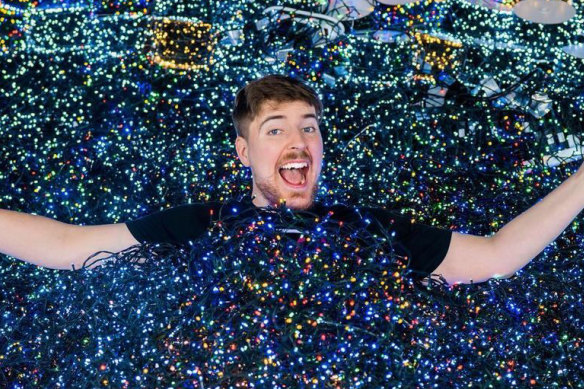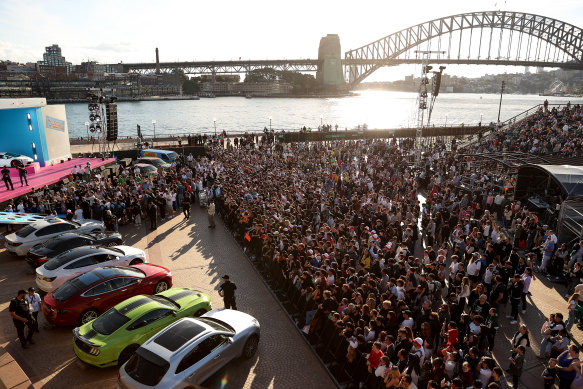
Famous people don’t require you to seek them out or join a subculture. Their presence is ambient, even atmospheric; they’re just in the air. Voluntarily or involuntarily, we breathe them in. That is how they become intelligible reference points right across a culture. In that sense, fame is less about the raw number of people who know you, and more about how they do.

Youtube star MrBeast is one of the most popular content creators in the world.Credit: Instagram
That’s why the shortest route to fame has traditionally been broadcast. The clue is in the name: the broad dissemination of personalities right across the social spectrum. You will likely recognise a film star, television personality or pop star even if you’ve never sampled their work, because broadcast tends to turn them into icons or avatars. That process was obviously more intense before the arrival of social media and streaming, but even the diminishing power of a broadcast confers a level of recognition beyond its raw numbers. If a broadcaster and a social media star have roughly the same-sized audience, the broadcaster will likely be more widely known.
In MrBeast’s case, people know him because their YouTube algorithm funnels them to him. This isn’t an accident. MrBeast revealed as much when he told Rolling Stone of “a five-year point in my life where I was just relentlessly, unhealthily obsessed with studying virality, studying the YouTube algorithm”.
No doubt he’s mastered that, which is why he can reach such extraordinary numbers of people. But this method is, in a certain sense, a private, personalised way of becoming known. MrBeast is offered to you, and you specifically, in a machine-curated way. Accordingly, MrBeast will not be offered to others using the very same platform, and they will have no idea that has even happened. So, while his following is enormous, MrBeast is avoidable in the way traditionally famous people are not. He isn’t in the air. He’s in the network, and there’s every chance you’ll completely miss him if you aren’t in it, too.
We’re seeing more of this: people you’ve never heard of selling out arenas. That was once impossible because the route to such an audience was inescapably public: you had to pass through mass culture to get it. Fame occurred in a sequential kind of way: you got bigger and bigger in that culture until you could be called famous.

MrBeast created possibly the single largest mass truancy event in Australian history at the Sydney Opera House this week.Credit: Getty Images
But MrBeast is something else altogether. He’s the central figure of a massive, global subculture; at once colossal and niche. This is what is newly possible: to have a massive following, but not a mass following.
That only happens because culture is in the process of fracturing into a collection of subcultures. Those subcultures might be huge – many times bigger than our own society – but simultaneously not big enough to occupy our shared cultural imagination. That seems a paradox, but it actually tells us something reasonably clear: that culture is an inherently public thing that can’t truly be nourished by the private logic of algorithms, no matter how many people they connect. Society, it seems, cannot be held together by networks. It needs the air to breathe.
Waleed Aly is a regular columnist.



























